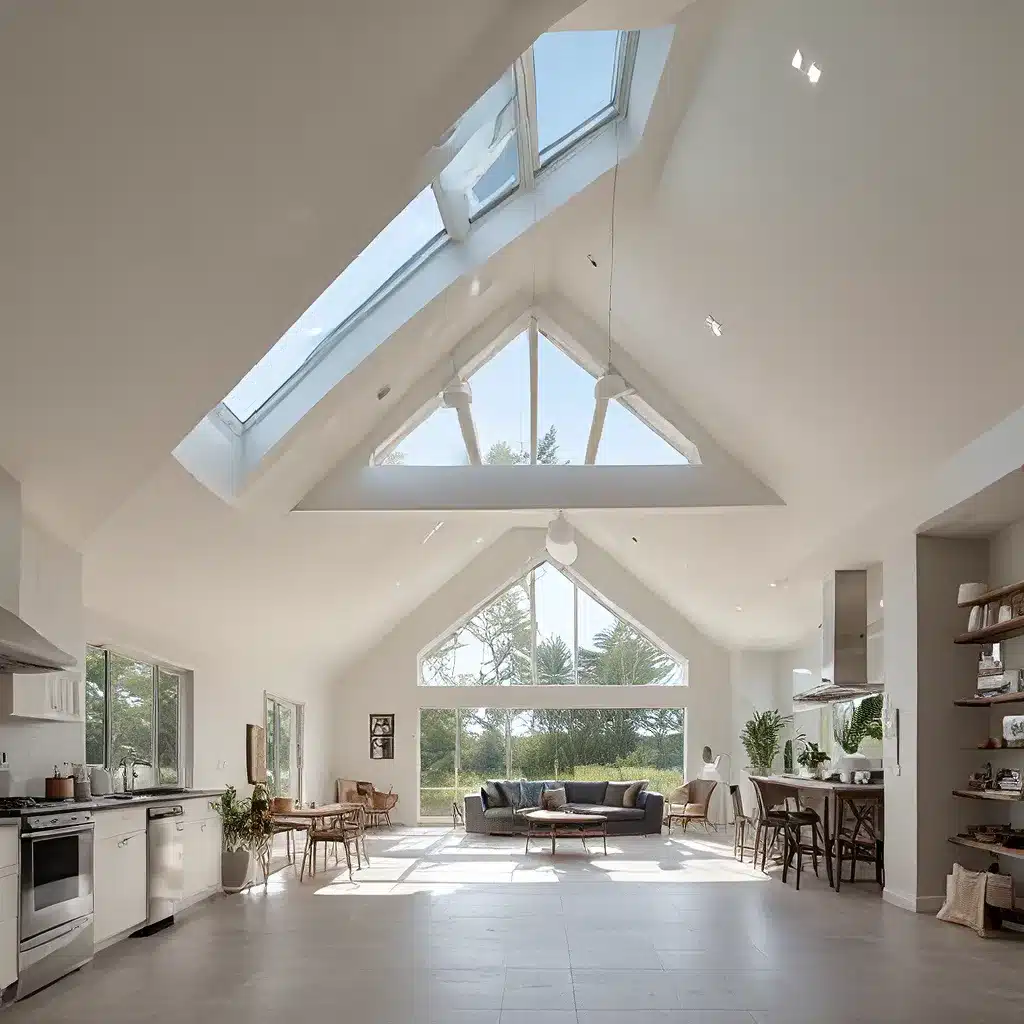
As a passionate advocate for biophilic design, I’m thrilled to share my insights on harnessing the power of natural light in our homes. Let’s dive in and explore how we can leverage the transformative effects of sunlight to enhance our living spaces and overall well-being.
Unlocking the Restorative Benefits of Natural Light
In today’s fast-paced, technology-driven world, we find ourselves spending an astounding 90% of our time indoors. Imagine that – as a 40-year-old, I’ve spent a staggering 36 years of my life cocooned in artificial environments, disconnected from the natural rhythms that our bodies and minds crave. It’s no wonder that stress and mental health issues have become the “health epidemic of the 21st century,” as the World Health Organization aptly described it.
The good news is that we can fight back against this alarming trend by harnessing the power of natural light. Sunlight has a profoundly positive impact on our circadian rhythms, the innate cycles that govern our sleep-wake patterns, hormone production, and overall physiological functions. When our bodies are exposed to the natural ebb and flow of daylight, it helps to regulate our nervous systems, alleviate emotional distress, and even reduce the risk of critical illnesses like obesity, heart problems, and breast cancer.
But the benefits of natural light go beyond just physical health. Studies have shown that it can also boost our mental well-being, improving mood, enhancing cognitive performance, and fostering a deeper connection with the world around us. It’s no wonder that the principles of biophilic design – the idea of integrating nature into our built environments – have gained such traction in recent years.
Maximizing Natural Light in Your Home
So, how can we bring more of this restorative, life-giving light into our homes? The answer lies in strategic roofing design and the strategic placement of windows, doors, and skylights.
Southern Roofing Co. offers a range of high-quality roofing solutions that can help you harness the power of natural light. From pitched roofs with strategically placed skylights to flat roofs with expansive glazing, they can work with you to design a roofing system that optimizes the flow of daylight throughout your home.
But it’s not just about the roof – the placement and size of your windows and doors play a crucial role as well. Dual-aspect rooms with windows on adjacent walls allow light to enter from multiple directions, creating a more dynamic and diffuse lighting experience. And by replacing solid interior doors with glazed ones, you can facilitate the movement of natural light from one room to another, ensuring that even the darkest corners of your home are touched by the sun’s embrace.
Embracing the Circadian Rhythm with Dynamic Lighting
It’s not enough to simply flood our homes with natural light. The changing quality of sunlight throughout the day is just as important, as it helps to synchronize our bodies’ internal clocks and promote healthy circadian rhythms.
In the morning, the warm, yellow tones of sunlight trigger the release of serotonin, making us feel more alert and energized. As the day progresses, the light shifts to a cooler, blue hue, which boosts our focus and productivity. And as evening approaches, the warm, red hues of the setting sun signal to our bodies that it’s time to wind down and prepare for sleep.
By incorporating lighting systems that mimic these natural transitions, we can create a more immersive and restorative experience in our homes. Wake-up light alarm clocks, for example, can gradually increase in brightness and shift in color temperature, gently rousing us from sleep in a way that feels in tune with nature’s rhythms.
Harnessing the Power of Fractal Patterns
But the magic of natural light doesn’t stop there. Fractals – the intricate, repeating patterns found in nature, from tree branches to the surfaces of leaves – have a unique ability to captivate our senses and soothe our minds.
By incorporating window films, curtains, and lighting fixtures that mimic these fractal patterns, we can create a dynamic and diffuse lighting experience that feels alive and ever-changing. The dappled light that filters through a forest canopy or the reflections of rippling water on a wall can have a profoundly calming effect, helping to reduce stress and promote a sense of connection with the natural world.
Embracing the Unexpected: Skylights and Beyond
While strategic window placement and biophilic lighting design are essential, don’t be afraid to get a little creative with your roofing choices. Skylights, for example, can be a game-changer, flooding your home with natural light and allowing you to experience the changing seasons and weather patterns from the comfort of your own living space.
But the options don’t stop there. Velux Cabrio balcony roof windows and Velux sun tunnels offer even more opportunities to integrate the outdoors into your indoor living experience. Imagine being able to step out onto a cozy rooftop terrace or watch the play of moonlight on your bedroom walls – the possibilities are endless!
Embracing the Uncertainty of Biophilic Design
As with any pursuit that seeks to harness the power of nature, there’s an element of uncertainty and ongoing exploration involved in biophilic design. The field is constantly evolving, with researchers and designers continuously pushing the boundaries of what’s possible.
That’s why it’s important to approach this topic with a curious and open-minded spirit. While I’ve shared some of the well-established benefits of natural light and fractal patterns, there may be new discoveries and emerging theories that I’m not even aware of. And that’s perfectly okay – the beauty of biophilic design lies in its ability to adapt and evolve alongside our growing understanding of the natural world.
So, as you embark on your own journey to bring more natural light into your home, I encourage you to stay informed, experiment, and embrace the unexpected. Who knows what wonders you might uncover along the way? The possibilities are as endless as the sky itself.